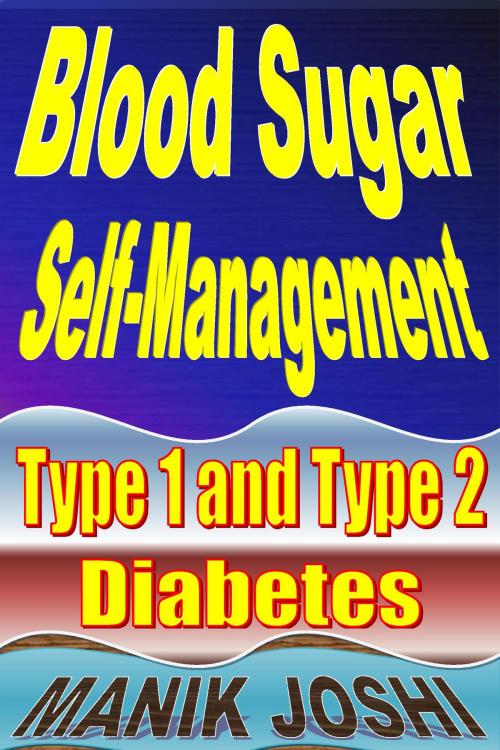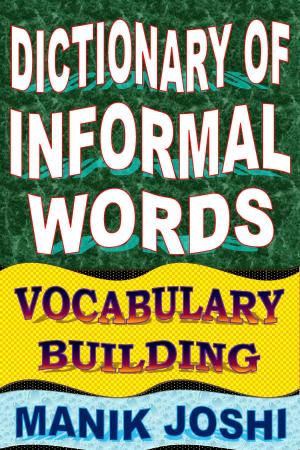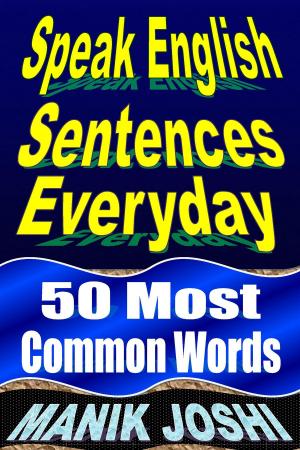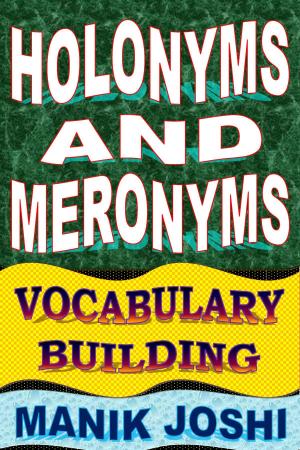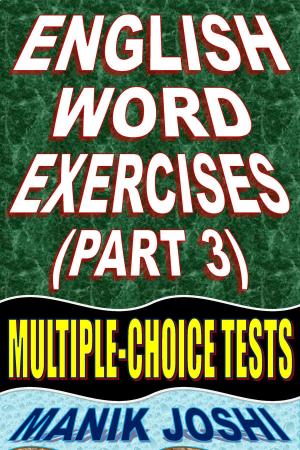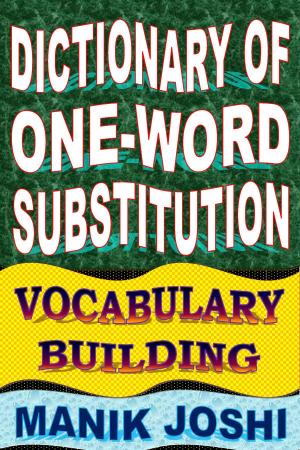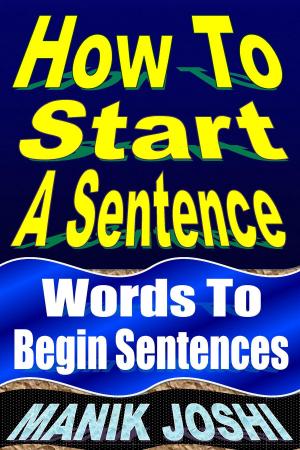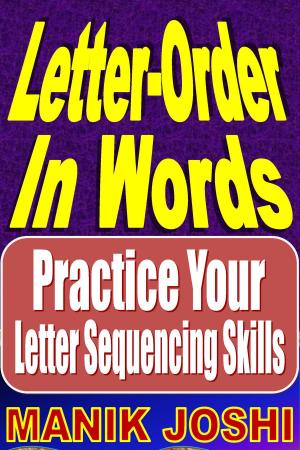Blood Sugar Self-management: Type 1 and Type 2 Diabetes
Nonfiction, Health & Well Being, Health, Ailments & Diseases, Diabetes, Health Care Issues| Author: | Manik Joshi | ISBN: | 9781310239618 |
| Publisher: | Manik Joshi | Publication: | May 14, 2015 |
| Imprint: | Smashwords Edition | Language: | English |
| Author: | Manik Joshi |
| ISBN: | 9781310239618 |
| Publisher: | Manik Joshi |
| Publication: | May 14, 2015 |
| Imprint: | Smashwords Edition |
| Language: | English |
This Book Covers The Following Topics:
- What is Blood Sugar?
- Different Stages of Blood Sugar
- Self-Monitoring of Blood Sugar
- Types of Diabetes
- Blood Sugar: Causes
- Blood Sugar: Symptoms
- High Blood Sugar: Complications
- Blood Sugar Test
- Treatments of Low Blood Sugar
- Treatments of High Blood Sugar
- Treatments -- (A). Lose Your Weight
- Treatments -- (B). Physical Activity
- Treatments -- (C). Healthy Diet
- Treatments -- (D). Minerals
- Treatments -- (E). Vitamins
- Treatments -- (F). Drink Plenty of Water
- Treatments -- (G). Control Your BP
- Treatments -- (H). Control Your Cholesterol
- Treatments -- (I). What to Avoid?
- Treatments -- (J). Others
- Pancreas and Insulin
- Some Useful Facts
Sample This:
- What is Blood Sugar?
The blood sugar (glucose) level is the amount of sugar (glucose) present in the blood of human or animals. When blood sugar (glucose) level rises too high, it's called hyperglycemia. When blood sugar (glucose) level drops too low, it's called hypoglycemia.
Basic Facts about Blood Sugar (Glucose) and Insulin:
Glucose (a simple sugar) is the primary source of energy for the cells of the body. Glucose comes from the foods (carbohydrates) we eat. Body converts the carbohydrates into sugar. It is also formed and stored inside the body.
After meals, adequate quantity of insulin hormone is automatically released by pancreas.
Blood carries the glucose from the intestines or liver to body cells.
Insulin makes it possible for cells to take in the glucose from blood. In other words, insulin helps absorption of glucose by cells.
Level of blood sugar starts dropping soon after it starts entering the cell.
Blood sugar levels fluctuate throughout the day.
MEASUREMENT OF BLOOD SUGAR
-
milligram/deciliter (mg/dL) -- Blood sugar is measured in milligram/deciliter.
-
millimols/litre (mmol/L) -- Blood sugar is also measured in millimols/liter (mmol/L). millimols/liter (mmol/L) is also called millimolars (mM)
Note: 1mmol/L is equivalent to 18 mg/dL.
- DCCT HbA1c (%) -- Blood sugar levels over the last 3 months are measured through an A1C test. Findings are represented as a percentage. The range may fall in between 4-15%. Red blood cells in our body may last up to 3 months (or 12 weeks) before getting regenerated. Therefore, average of glycated hemoglobin in blood over 3 months is taken for discerning the average blood glucose level.
DCCT stands for Diabetes Control and Complications Trial
- IFCC HbA1c (mmol/mol) -- Findings of A1C Test may also be represented in millimols/mole (mmol/mol).
IFCC stands for International Federation of Clinical Chemistry
NOTE: IFCC HBA1c (mmol/mol) = [DCCT HBA1c (%) - 2.15] * 10.929
- Different Stages of Blood Sugar
Blood sugar level in your body changes from day-to-day or moment-to-moment. Blood sugar depends on quantity and timing of food you have eaten. More importantly it depends on what you have eaten.
SITUATION 1: Fasting Glucose Level / Glucose Level Before Meals [Pre Prandial]
Following are the different ranges of blood sugar after 8-10 hours of fasting (generally before meals in the morning) in mg/dL, mmol/L, DCCT HbA1c (%) and IFFCC HbA1c (mmol/mol).
Low blood sugar --
Less than 70 mg/dL Or
Less than 3.9 mmol/L Or
Less than 4% DCCT HbA1c (%) Or
Less than 20.2% IFCC HbA1c (mmol/mol)
Normal blood sugar --
71 mg/dL to 99 mg/dL Or
3.9 mmol/L to 5.4 mmol/L Or
4.1% DCCT HbA1c (%) to 4.9% DCCT HbA1c (%) Or
20.3% IFCC HbA1c (mmol/mol) to 31.0% IFCC HbA1c (mmol/mol)
Above normal blood sugar --
100 mg/dL to 126 mg/dL Or
5.5 mmol/L to 7.0 mmol/L Or
5.0 DCCT HbA1c (%) to 5.7 DCCT HbA1c (%) Or
31.1 IFCC HbA1c (mmol/mol) to 38.8 IFCC HbA1c (mmol/mol)
High blood sugar --
127 mg/dL to 169 mg/dL Or
7.1 mmol/L to 9.4 mmol/L Or
5.8 DCCT HbA1c (%) to 6.9 DCCT HbA1c (%) Or
38.9 IFCC HbA1c (mmol/mol) to 51.9 IFCC HbA1c (mmol/mol)
This Book Covers The Following Topics:
- What is Blood Sugar?
- Different Stages of Blood Sugar
- Self-Monitoring of Blood Sugar
- Types of Diabetes
- Blood Sugar: Causes
- Blood Sugar: Symptoms
- High Blood Sugar: Complications
- Blood Sugar Test
- Treatments of Low Blood Sugar
- Treatments of High Blood Sugar
- Treatments -- (A). Lose Your Weight
- Treatments -- (B). Physical Activity
- Treatments -- (C). Healthy Diet
- Treatments -- (D). Minerals
- Treatments -- (E). Vitamins
- Treatments -- (F). Drink Plenty of Water
- Treatments -- (G). Control Your BP
- Treatments -- (H). Control Your Cholesterol
- Treatments -- (I). What to Avoid?
- Treatments -- (J). Others
- Pancreas and Insulin
- Some Useful Facts
Sample This:
- What is Blood Sugar?
The blood sugar (glucose) level is the amount of sugar (glucose) present in the blood of human or animals. When blood sugar (glucose) level rises too high, it's called hyperglycemia. When blood sugar (glucose) level drops too low, it's called hypoglycemia.
Basic Facts about Blood Sugar (Glucose) and Insulin:
Glucose (a simple sugar) is the primary source of energy for the cells of the body. Glucose comes from the foods (carbohydrates) we eat. Body converts the carbohydrates into sugar. It is also formed and stored inside the body.
After meals, adequate quantity of insulin hormone is automatically released by pancreas.
Blood carries the glucose from the intestines or liver to body cells.
Insulin makes it possible for cells to take in the glucose from blood. In other words, insulin helps absorption of glucose by cells.
Level of blood sugar starts dropping soon after it starts entering the cell.
Blood sugar levels fluctuate throughout the day.
MEASUREMENT OF BLOOD SUGAR
-
milligram/deciliter (mg/dL) -- Blood sugar is measured in milligram/deciliter.
-
millimols/litre (mmol/L) -- Blood sugar is also measured in millimols/liter (mmol/L). millimols/liter (mmol/L) is also called millimolars (mM)
Note: 1mmol/L is equivalent to 18 mg/dL.
- DCCT HbA1c (%) -- Blood sugar levels over the last 3 months are measured through an A1C test. Findings are represented as a percentage. The range may fall in between 4-15%. Red blood cells in our body may last up to 3 months (or 12 weeks) before getting regenerated. Therefore, average of glycated hemoglobin in blood over 3 months is taken for discerning the average blood glucose level.
DCCT stands for Diabetes Control and Complications Trial
- IFCC HbA1c (mmol/mol) -- Findings of A1C Test may also be represented in millimols/mole (mmol/mol).
IFCC stands for International Federation of Clinical Chemistry
NOTE: IFCC HBA1c (mmol/mol) = [DCCT HBA1c (%) - 2.15] * 10.929
- Different Stages of Blood Sugar
Blood sugar level in your body changes from day-to-day or moment-to-moment. Blood sugar depends on quantity and timing of food you have eaten. More importantly it depends on what you have eaten.
SITUATION 1: Fasting Glucose Level / Glucose Level Before Meals [Pre Prandial]
Following are the different ranges of blood sugar after 8-10 hours of fasting (generally before meals in the morning) in mg/dL, mmol/L, DCCT HbA1c (%) and IFFCC HbA1c (mmol/mol).
Low blood sugar --
Less than 70 mg/dL Or
Less than 3.9 mmol/L Or
Less than 4% DCCT HbA1c (%) Or
Less than 20.2% IFCC HbA1c (mmol/mol)
Normal blood sugar --
71 mg/dL to 99 mg/dL Or
3.9 mmol/L to 5.4 mmol/L Or
4.1% DCCT HbA1c (%) to 4.9% DCCT HbA1c (%) Or
20.3% IFCC HbA1c (mmol/mol) to 31.0% IFCC HbA1c (mmol/mol)
Above normal blood sugar --
100 mg/dL to 126 mg/dL Or
5.5 mmol/L to 7.0 mmol/L Or
5.0 DCCT HbA1c (%) to 5.7 DCCT HbA1c (%) Or
31.1 IFCC HbA1c (mmol/mol) to 38.8 IFCC HbA1c (mmol/mol)
High blood sugar --
127 mg/dL to 169 mg/dL Or
7.1 mmol/L to 9.4 mmol/L Or
5.8 DCCT HbA1c (%) to 6.9 DCCT HbA1c (%) Or
38.9 IFCC HbA1c (mmol/mol) to 51.9 IFCC HbA1c (mmol/mol)
